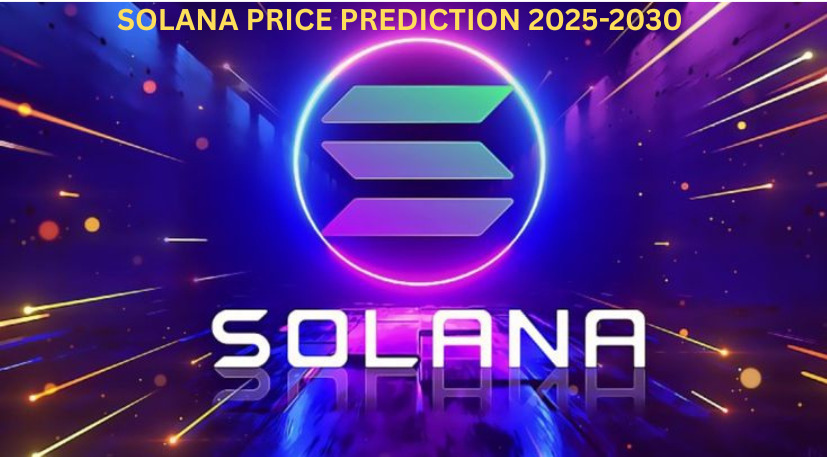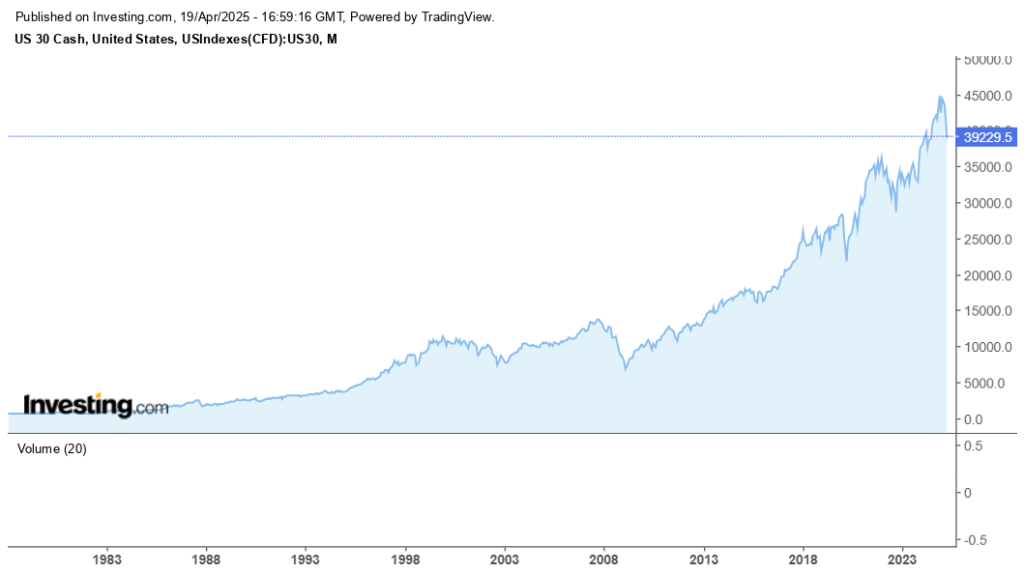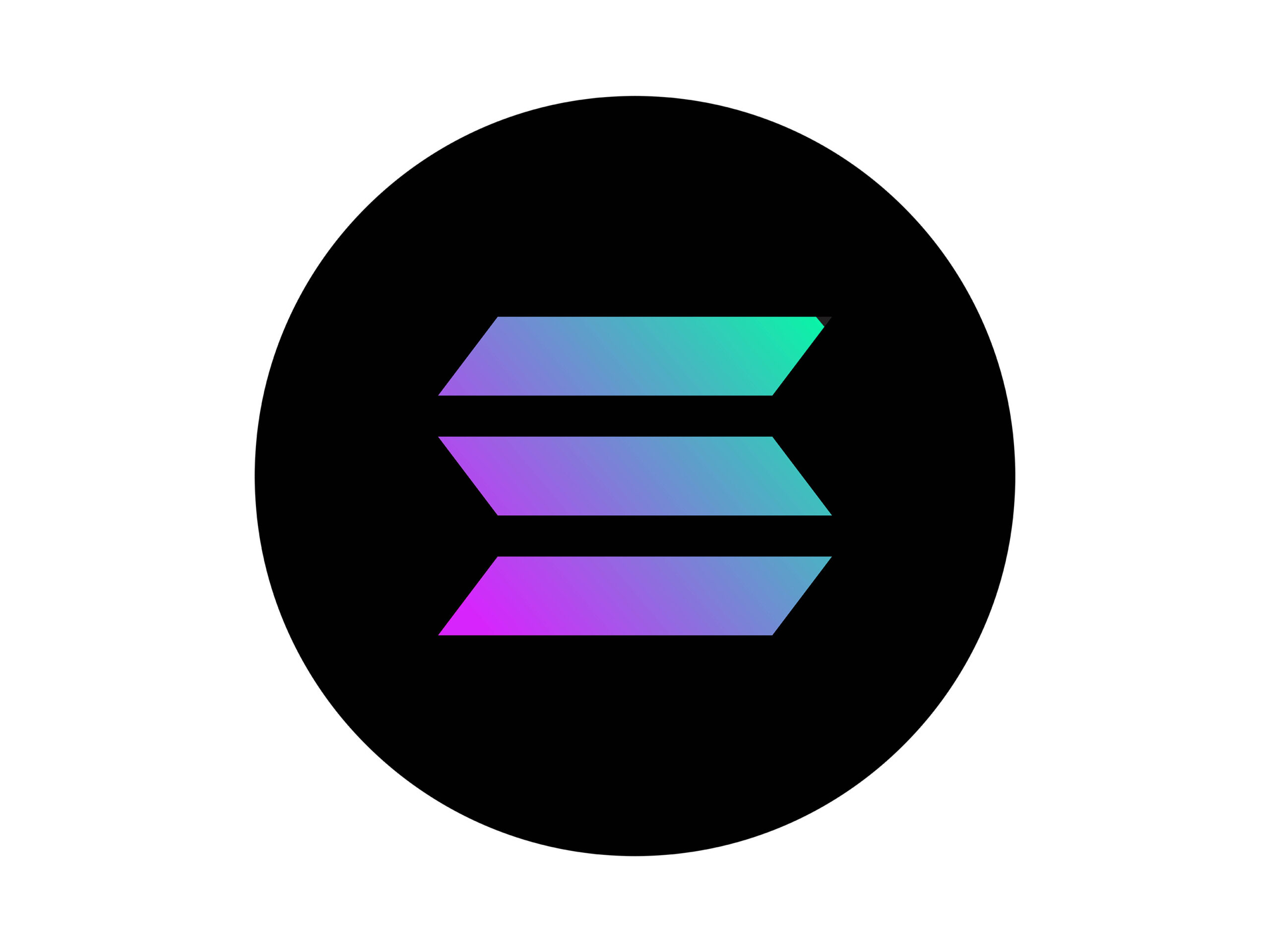
Solana (SOL) Price Prediction 2025-2030 Crypto Forecast
Are you curious in Solana’s (SOL) prospects and potential price in the upcoming years? We will examine the price projections for Solana in 2025 and beyond in this post.
One of the most well-known blockchain platforms is Solana, which provides decentralized apps (dApps) with an extremely scalable and affordable option. The price of the SOL token is still up in the air, though, as a result of both external market factors and technology developments. The price forecasts for Solana in the upcoming years will be the main topic of this essay.
However, it’s crucial to remember that forecasts of cryptocurrency prices are essentially speculative and subject to a variety of uncontrollable variables.
What Is Solana (SOL)?
SOL is a high-performance blockchain platform designed to give dApps and cryptocurrency companies quick, safe, and scalable solutions.
Solana’s Founders And History:
Anatoly Yakovenko, a former engineer at Dropbox and Qualcomm, founded SOL. After noticing scalability problems with current blockchain platforms and realizing the need for a quicker, more effective solution, he was motivated to develop Solana.
Solana’s construction got underway in 2017. The SOL blockchain’s developer, SOL Labs, was formally established in 2018 by businessman Anatoly Yakovenko.
March 16, 2020, saw the introduction of the SOL mainnet. The platform has expanded quickly since then. SOL was widely used in non-fungible tokens (NFTs), decentralized finance (DeFi), and other decentralized applications (dApps) by the end of 2021.
A hack affecting 9,231 SOL wallets occurred on August 3, 2022, when around $8 million was stolen from victims using four particular wallet addresses. A statement from the SOL Foundation claims that the hack occurred as a result of a flaw in Slope Finance’s digital wallet software.
The U.S. Securities and Exchange Commission (SEC) sued Coinbase in June 2023, alleging that SOL and twelve other cryptocurrencies on the platform need to be categorized as securities in accordance with the Howey Test. However, SOL has denied the SEC’s assertion, arguing that its token is not a security.
Solana Overview:
As a high-performance blockchain, Solana is built to effectively manage massive dApps and transactions. A combination of scalable design, an optimized infrastructure, and novel consensus mechanisms are essential to its operation. The following significant advancements form the foundation of Solana’s performance.
- Historical Proof (PoH): Every transaction is timestamp-based using Solana’s proprietary Proof of History (PoH), which is a cryptographic clock. This eliminates the need for direct communication by guaranteeing that every node in the network agrees on the sequence of events. Solana’s use of PoH enables the network to perform thousands of transactions per second by cutting down on the time needed to confirm transactions. In essence, PoH serves as a schedule that validators can adhere to in order to guarantee precise transaction ordering.
- BFT Tower: Solana uses an algorithm called Tower BFT (Byzantine Fault Tolerance) to reach a consensus. The purpose of this method is to increase transaction speeds by optimizing Practical Byzantine Fault Tolerance (PBFT). Tower BFT is a consensus method based on Proof of Stake that lowers throughput loss and data transfer latency by using Proof of History as a clock.
Sea level: Solana makes use of Sealevel, a parallel processing engine. Solana’s throughput can be significantly increased by handling many transactions in parallel, as contrast to typical blockchains that process transactions one at a time.
turbine: Solana sends transaction data to nodes throughout the network in smaller packets using the Turbine protocol. This allows for speedier data transfer by lowering the bandwidth needed to spread data around the blockchain. - The Gulf Stream. Solana’s transaction forwarding protocol, Gulf Stream, does not use mempools. Before being processed, transactions on a lot of blockchains wait in a mempool. By identifying validators beforehand and sending transactions straight to validators before they are even included in the subsequent block, Solana does away with the requirement for a mempool.
Pipeline. Solana processes streams of transaction data via a method known as pipelining. To further expedite transaction processing, this entails organizing the validation and replication of data among the blockchain nodes. Pipelining minimizes delays and maximizes block generation by enabling many phases of transaction validation and execution to occur concurrently. - Cloudbreak. Solana uses Cloudbreak, a horizontally scaled account database, to handle the massive volume of data produced by a high-performance blockchain. By enabling simultaneous reading and writing of data across several nodes, it guarantees that Solana can grow effectively without experiencing data bottlenecks.
Solana is a desirable option for developers creating dApps and for users looking for speedy, inexpensive transactions because of its design, which enables it to provide high transaction throughput, cheap fees, and instant finality.
Solana (SOL) Token:
The native utility token of the Solana network is called SOL. Staking, paying transaction fees, and taking part in governance choices are all done with it.
At first, SOL had 500 million tokens in total. In order to give staking rewards, inflation has caused this number to significantly increase over time. Nevertheless, Solana uses transaction fee burning as a deflationary mechanism. Every transaction fee paid in SOL has a part burned, or taken out of circulation, which gradually lowers the overall supply and helps offset inflation.
Advantages And Disadvantages Of Solana:
Solana has advantages and disadvantages like any other financial asset. Let’s examine its main benefits and drawbacks.
Key Advantages Of Solana:
- High speed of transactions: With the capacity to execute up to 65,000 transactions per second (TPS), Solana’s blockchain is built to process transactions far more quickly than many other platforms.
- Minimal expenses of transactions: Very low transaction fees—typically less than $0.01 per transaction—are made possible by the network’s architecture. Because of this, Solana is a desirable choice for dApps, DeFi platforms, and NFT projects where the exorbitant costs on other platforms, like Ethereum, may be unaffordable.
- Scalability: SOL may grow without the requirement for sharding or layer-2 solutions, in contrast to many other blockchains that experience scalability problems as they expand. As the number of users and apps grows, its architecture is designed to stay efficient while maintaining constant transaction prices and speeds.
- Expanding ecosystem: With multiple DeFi systems, NFT marketplaces, and Web3 projects built on its network, SOL has created a strong and growing ecosystem.
- Developer-friendly: With grant programs, thorough documentation, and a plethora of training efforts, SOL offers developers a strong infrastructure.
- Inflation balance: The technique of burning transaction fees balances out the staking rewards that are steadily growing the overall amount of SOL tokens.
- Outages and network instability: SOL dependability has been questioned because to a number of network disruptions and downtimes, despite its remarkable speed and scalability. For instance, the network experienced multiple failures in 2021 and 2022 as a result of high traffic volumes and system flaws, which disrupted apps and transactions.
- Issues with centralization: Even if the platform is decentralized, SOL has come under fire for centralization dangers, especially when it comes to the concentration of validator power in a few hands.
- Ambiguity in regulations: Like all cryptocurrencies, SOL is susceptible to abrupt legislative changes that could affect its operations and growth because it operates in a mostly unregulated market.
Solana (SOL) Price History:
In April 2020, SOL went public, trading between $0.50 and $0.90. The token’s price topped $1.00 in July 2020. Early in 2021, SOL price increased in tandem with the overall cryptocurrency market’s boom. The price of SOL surpassed $10 as early as February 2021, and on November 6 it hit its highest point ever.
SOL peaked and then started to plummet as the cryptocurrency market as a whole did. The fall ceased at the start of 2023, and the price began to move sideways until October of the same year. Following that, SOL experienced tremendous increase until April 2024, following which it underwent a smooth correction in a wide range.
SOL was also impacted by the cryptocurrency market’s explosive expansion in November 2024, and on January 19, 2025, the token’s price hit a new all-time high. Following that, there was a significant price correction that is currently ongoing.

Solana Price Predictions:
Solana (SOL) Technical Analysis:
The price of SOL is currently undergoing a significant adjustment after hitting a new high in January 2025. The Parabolic SAR, MACD, and moving averages all show a gloomy outlook. The RSI is nearing oversold levels and below its moving average. The chart has simultaneously developed a descending wedge shape, suggesting that the correction may be nearing its end.
Even if the descending wedge pattern is starting to emerge, it is still too soon to say that the correction is over. It’s still possible that the price will drop to $161 or less. However, there is still room for expansion in the worldwide cryptocurrency sector.
Long-term SOL Price Prediction 2025-2030:
The Solana blockchain is intriguing because to its many technical features. It should be remembered, too, that it has fierce rivals who aren’t just watching. The price of the project’s token might rise significantly if it continues to develop successfully.
High Price Scenario:
In this case, SOL emerges as the top platform for NFTs, DeFi, and dApps. With thousands of projects depending on SOL cheap costs and quick transaction speeds, its ecosystem experiences tremendous development. SOL is the preferred option for big businesses and financial organizations wishing to incorporate blockchain technology into their operations due to its strong infrastructure and scalability. By 2030, the SOL token might be worth between $500 and $1,500 in this high price scenario.
Moderate Price Scenario:
As more developers build on the platform, SOL ecosystem keeps growing at a low pricing point. However, it is up against fierce competition from both more recent entries like Avalanche and more established blockchains like Ethereum and Binance Smart Chain. SOL simultaneously fixes its previous network breakdowns and increases dependability, which makes it a more desirable option for users and developers. Under these circumstances, SOL might cost between $200 and $500 by 2030.
Low Price Scenario:
SOL has major obstacles that restrict its ability to grow in the low price scenario. Its credibility and dependability are lowered by significant security flaws or network failures. SOL loses market share when other blockchains—like Ethereum or cutting-edge technologies—perform better in terms of scalability, decentralization, or developer involvement. Government moves or stricter regulations have a detrimental impact on SOL and the larger cryptocurrency market, restricting its potential for growth. By 2030, SOL’s price might drop below $30 in this gloomy scenario, and technical, competitive, or regulatory issues could cause it to stagnate or perhaps drop further.
FAQ
Will Solana reach $1000?
According to many experts, under favorable developments, this is quite within the realm of possibility.
Is Solana (SOL) a good investment?
Solana can be a strong investment due to its technological advantages, growing ecosystem, and potential for broader adoption in DeFi, NFTs, and Web3 applications. If the network continues to improve in terms of reliability and scalability, and if it maintains its competitive edge, SOL can see significant price growth over time.
However, it should be remembered that investing is always risky, especially investing in cryptocurrencies. Before making investment decisions, always do your own research and make sure that you are not investing more than you can afford to lose.
How to buy Solana?
Solana is one of the largest cryptocurrencies by market cap. It can be bought on many crypto exchanges. On the YouHodler platform, you can exchange other cryptocurrencies for Solana, as well as buy it with a credit card or your SEPA bank account.
Note: Read more about crypto coin prediction Click Here.
